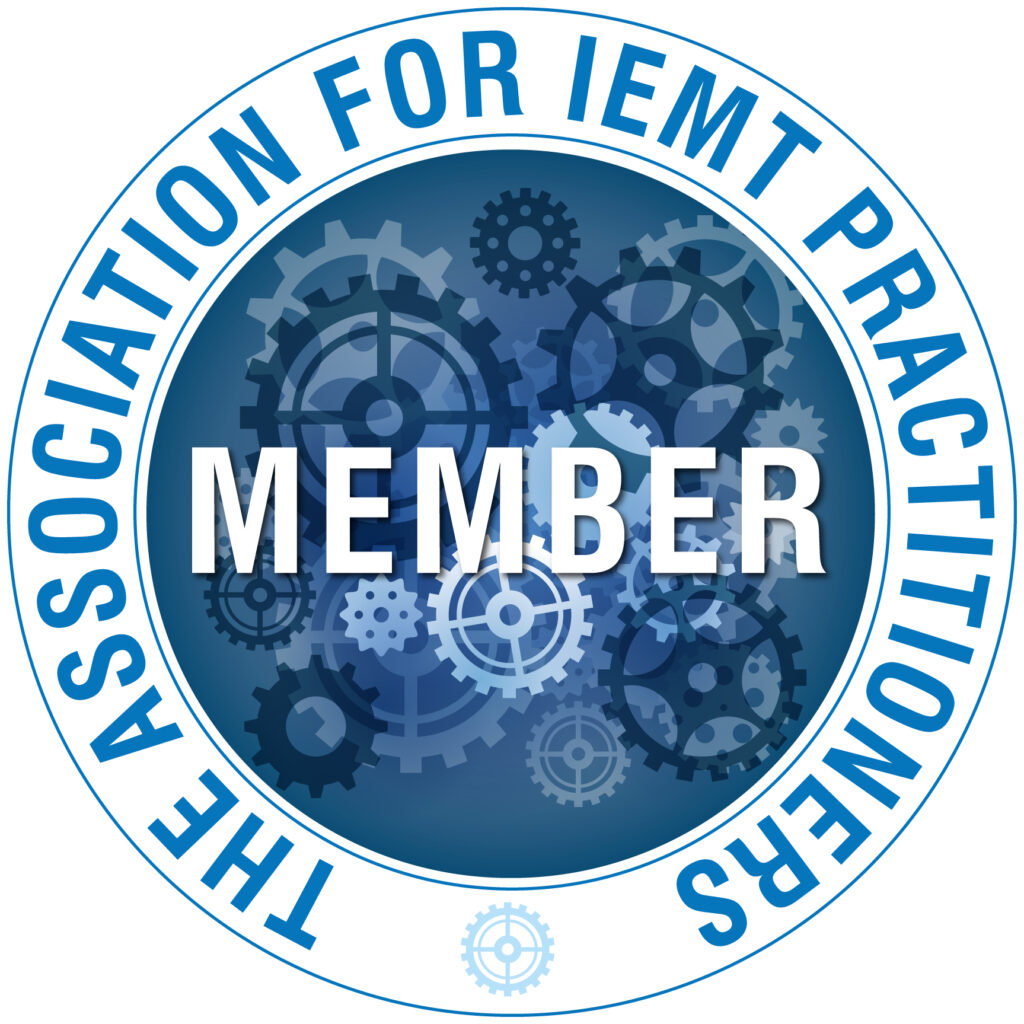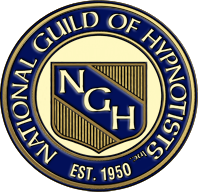How To Perform Self-Hypnosis For Relaxation & Use Self-Hypnosis For Anxiety

Feeling stressed? Makes sense. Through my personal journey with music, motherhood, and hypnotherapy, I found how self-hypnosis aids in finding peace. At Grounded Visions WellnessOur purpose is to guide you in harnessing your mind’s innate power to calm down during hypnosis sessions.
You’ll get skilled at soothing your thoughts and finding tranquility within yourself. Surprisingly, it’s easier than it appears.
Key Takeaways
- Self-hypnosis is a method to soothe your mind on your own. It involves deep breathing, concentrating on goals, and positive affirmations.
- Consistent practice improves the efficacy of self-hypnosis. Selecting a quiet area helps minimize interruptions.
- This method can help lessen stress, better sleep quality, and increase your concentration. It’s beneficial for your overall health.
- It’s normal to face difficulties such as becoming sidetracked or experiencing tension. You can improve gradually with practice and perseverance.
- Using self-hypnosis in combination with other Relax and consider how self-hypnosis can help you achieve a more tranquil state of mind.ation techniques such as meditation can strengthen its benefits.
What is Self-Hypnosis & Hypnosis?

So, now that we’ve initiated this venture, let’s discuss self-hypnosis. It’s akin to possessing a magic key. This key opens the door to our mind, the place where all our habits and feelings reside.
Cleveland Clinic labels it as “self-induced intentional trance.” Yet, it isn’t merely for theatrics or control tricks observed in films.
At Grounded Visions Wellness, I assist individuals in uncovering this key. Self-hypnosis is anything but frightening or peculiar; it’s potent! You acquire the ability to transform your thoughts, soothe your emotions, and even modify behaviors that no longer benefit you.
The best aspect? You execute it independently! By practicing self-hypnosis and visualization, my clients attain emotional freedom and profound healing.
Envision self-hypnosis as a serene dialogue with oneself where you’re the orator and the auditor simultaneously. You lead yourself into a relaxed state—somewhat similar to the moment you’re on the brink of falling asleep—and then employ affirmative suggestions to facilitate changes in your life.
This could be for stress alleviation or discovering inner tranquility.
It’s safe for the majority, but keep in mind: outcomes can differ as each individual is unique, especially in therapeutic settings. Scientific evidence suggests we require more research to gain a comprehensive understanding of all its advantages and potential risks.
Steps to Perform Self-Hypnosis
Ever felt like you’re coursing on empty, your mind making more noise than a concert speaker? I understand. Let me introduce you to a tranquil refuge: self-hypnosis for relaxation. At Grounded Visions Wellness, we regard this as a pivotal step in instigating profound healing and emotional liberation.
Self-hypnosis is straightforward yet influential. It’s all about looking within, quieting the mind, and steering your thoughts for a peaceful direction. Here’s our approach to it: first, secure a place where you won’t be disturbed – perhaps it’s a snug corner or beneath a tree in your backyard.
What follows? Deep breathing. These initial actions are more than mere motions; they’re entryways to serenity.
At Grounded Visions Wellness, our focus is empowering the individual. Through self-hypnosis, we assist people in discovering clarity and inner tranquility amidst life’s turbulence. This process exceeds therapy; it’s truly transformative.
Find a comfortable and quiet space
Finding a comfortable and quiet space is key for self-hypnosis. I always look for a spot that feels calm. This could be my cozy chair or even lying on the bed. The important part is to make sure it’s distraction-free.
No loud noises, no interruptions.
I set aside at least 30 minutes for this practice. This gives my mind time to relax and focus on my goal. A peaceful setting helps me let go of stress and shift into that hypnotic state more easily.
It’s all about creating the right atmosphere where I can truly unwind.
Creating a calm space allows your mind to breathe.
Use deep breathing to relax
I often use deep breathing to relax. It’s one of the simplest ways to calm my mind and body. Taking slow, deep breaths helps release tension. I find a quiet space where I won’t be disturbed.
Sitting or lying down comfortably sets the stage.
As I breathe in deeply through my nose, I feel my chest expand. Then, I slowly let out the breath through my mouth. In this moment, negativity feels like a dark cloud leaving my body.
Each exhale lifts stress away, bringing me closer to relaxation and peace of mind. Focusing on this breath allows me to connect with myself more clearly and promotes emotional freedom while using self-hypnosis for anxiety reduction or pain relief as needed.
Focus on a clear goal or intention
Setting a clear goal is key to effective self-hypnosis. It helps create a strong focus during sessions. I always choose an intention that resonates with me, whether it’s reducing stress, improving sleep quality, or exploring the therapeutic effects of self-hypnosis.
Visualizing this goal makes it real and powerful.
Positive affirmations also play a big role here. I repeat words that support my aim, like “I am relaxed” or “I can let go of tension.” This boosts my confidence and keeps my mind on track.
Each time I practice self-hypnosis, reaching for these goals becomes easier and more natural.
Visualize a calming scenario
Focusing on a clear goal helps direct my mind. Next, I visualize a calming scenario. This part is essential for self-hypnosis. I find that it draws me deeper into relaxation.
I imagine being at the beach, feeling the warm sand beneath my feet and listening to gentle waves. As I picture this place, I let myself feel lighter with each breath. Visualizing brings me peace and allows tension in my body to melt away.
In this tranquil space, I often imagine descending a staircase, which enhances my hypnotic trance even further. This technique truly makes all the difference in helping me relax and connect with my inner self while practicing self-hypnosis.
Introduce positive suggestions
Positive suggestions are key to self-hypnosis. They help guide the mind toward a specific goal. I often repeat affirmations that resonate with me, like “I am calm” or “I feel relaxed.” These simple phrases create strong mental images.
Visualizing positive scenarios deepens relaxation. Imagine being on a sunny beach or in a peaceful forest. The mind responds well to these calming scenes. It’s easier to let go of negative thoughts and emotions this way.
Speak those affirmations clearly as you visualize. This technique can support emotional freedom and clarity in your life, making it easier to harness inner healing power at Grounded Visions Wellness.
Gradually return to full awareness
After I introduce positive suggestions, it’s time to wrap things up. Gradually returning to full awareness is important. Start by moving your fingers and toes. Take your time here; five minutes can feel just right.
This gentle transition signals the mind that it’s ready to wake up.
My favorite trick? Picture yourself ascending a staircase. Each step brings you closer to alertness. As you climb, take deep breaths and enjoy the moment of calm before facing the day again.
By doing this, I find clarity and focus when I’m back in my regular state of mind. Stressors fade away as I prepare myself for what comes next, keeping me on track toward achieving my goals with energy and confidence!
Tips for Enhancing Self-Hypnosis
Want to get the most from self-hypnosis? It helps to practice often. Find a quiet place where you can focus. Try guided audio or scripts to keep your mind on track. You might also mix it with relaxation methods like meditation.
Doing these things can make your experience deeper and more rewarding. Keep reading to learn how self-hypnosis may benefit you!
Practice regularly
Self-hypnosis is a skill I learned through practice. It takes time and patience to see results. I found that practicing regularly, like daily for a month, really enhances its effectiveness.
Each session builds on the last. Soon, my mind learned how to relax quickly.
I suggest creating a routine that fits your life. Whether it’s morning or evening, find what works best for you. Consistency helps keep the process smooth and easy. With each session, you’ll feel more connected to your goal of relaxation and clarity.
Self-hypnosis is here to help you meet those goals and achieve emotional freedom!
Avoid distractions
Finding a quiet space helps me focus during self-hypnosis. Distractions can break my concentration. It’s best to find a calm place, free from noise and interruptions. I aim for at least 30 minutes of undisturbed time.
This allows me to relax fully and embrace the practice.
Silencing my phone is key for me too. Texts, calls, or even notifications can pull me out of my meditative state. I also keep away from loud environments where others might interrupt my sessions.
Creating this focused atmosphere enhances the effectiveness of self-hypnosis, allowing thoughts to flow freely without stressors in my life interfering with relaxation techniques like deep breathing or guided imagery.
Use guided audio or scripts
To keep distractions at bay, I find that using guided audio or scripts helps me focus. These tools create a gentle path to relaxation. They lead my mind and body into a calm state.
Apps like Nerva for IBS, Evia for hot flashes, and Finito for smoking cessation can be really helpful too.
I’ve often turned to these resources during self-hypnosis sessions with guidance from a hypnotherapist. The soothing voices guide me as I sit or lie down comfortably. They help me breathe deeply and visualize positive scenes.
Each session feels like a mini-vacation from stressors in my life. This technique eases tension in the body and promotes emotional freedom and clarity—a big win for my personal growth!
Combine with relaxation techniques like meditation
Combining self-hypnosis with techniques like meditation boosts relaxation. I find that both practices work well together. Meditating calms the mind and opens me up to deeper states.
I focus on my breath, letting go of tension in my body. This helps me stay grounded during self-hypnosis.
Using visualization during meditation adds another layer of peace. Imagining a serene place allows thoughts to settle more easily. It makes suggestions stick better in my mind too, helping me achieve my goals faster.
Self-hypnosis can help reduce stress and anxiety efficiently when paired with these techniques for relaxation.
Benefits of Self-Hypnosis for Relaxation
Self-hypnosis can be a transformative tool for relaxation. It helps me release stress and anxiety, making it easier to sleep better at night. As I practice self-hypnosis, I feel more focused and clear-headed during the day. This technique genuinely improves my well-being.
Reduces stress and anxiety
I have seen many professionals struggle with stress and anxiety. It can feel overwhelming at times. Self-hypnosis offers a safe way to calm the mind. By using techniques like deep breathing, I help clients reduce negative thoughts.
This practice helps create a peaceful state of relaxation.
Through self-hypnosis, I’ve noticed that people can let go of tension in their bodies easily. Focusing on calming images allows for deeper relaxation. As stress fades away, clarity and focus improve too.
Many even sleep better after practicing self-hypnosis regularly.
Moving forward, let’s explore how to perform self-hypnosis effectively for your own well-being!
Promotes better sleep
Self-hypnosis can work wonders for improving sleep. It helps calm those negative thoughts that keep me awake at night. I’ve seen how it reduces anxiety and promotes relaxation, making it easier to drift off into a peaceful slumber.
Many post-heart surgery patients have reported feeling less tired and depressed after using self-hypnosis techniques.
It’s fascinating how this method of hypnotism taps into our mind’s power to help us fall asleep better. By creating a calming place in my thoughts, I find it much simpler to quiet my racing mind when the day is done.
Now I’m ready to share tips for enhancing self-hypnosis so you can experience these benefits too!
Enhances focus and clarity
Focusing is key to getting things done. Self-hypnosis helps clear away distractions. It turns down the noise in my mind. This allows me to zero in on tasks with greater ease. I can tackle problems without feeling overwhelmed.
When I use self-hypnosis, I tap into a calm state of mind. In this space, thoughts become sharper and ideas flow more freely. The clarity gained helps improve my skills and creativity too! With regular practice, it boosts my ability to meet goals and achieve what I truly want.
Improves overall well-being
Self-hypnosis can truly boost well-being. By using this technique, I have reduced stress and tension in my body. Over time, it has helped me let go of negative thoughts and replace them with positive ones.
This shift enhances self-confidence. Feeling good inside lights up every part of life.
Regular practice leads to better mental health too. It promotes deep relaxation, allowing me to sleep peacefully at night, which is one of the potential benefits of self-hypnosis. Each session helps clear the mind and sharpens focus. As a result, I feel more balanced and ready to meet my goals daily.
Self-hypnosis is a simple tool that opens doors to deeper healing and transformation in our lives.
Common Challenges and How A Professional Hypnotherapist Works With Them
Have you ever tried to focus but just couldn’t? I get it—self-hypnosis can be tricky sometimes.
Many people struggle with distractions. A noisy environment or racing thoughts can pull you away from your goal. To fix this, find a quiet spot where you won’t be interrupted. If your mind wanders, gently remind yourself to breathe and focus again on what you want to achieve.
Sometimes, the challenge lies in feeling tense or anxious. You might feel stuck when trying self-hypnosis for relaxation. This is normal! You can simply take a few deep breaths to help release that tension from your body.
Each breath brings more calmness and clarity.
With patience and practice, you’ll make progress every time!
Difficulty focusing in self hypnosis
Focusing during self-hypnosis can be tough. I know this from personal experience. Many people struggle with distractions or doubts while trying to induce self-hypnosis. It’s common to feel your thoughts wander and lose that calm state.
Consistent practice helps a lot. Using guided audio or scripts can keep you engaged and on track. If my mind drifts off course, I remind myself to breathe deeply, steadying my thoughts.
Finding a quiet space free from stressors in your life is key too, especially for enhancing relaxation and achieving focus. As we move forward, let’s explore how to enhance our self-hypnosis practice effectively!
Experiencing interruptions in self-hypnosis work
Interruptions can break your focus during self-hypnosis. It’s easy to get distracted by noise or sudden movements around you. Finding a calm and relaxing place is key here. I often notice that if I choose a quiet room or even go outside, the chances of interruptions drop.
Sometimes, kids, pets, or phones can pull us out of that focused state. These disruptions are normal but frustrating! When they happen, it helps to pause and breathe deeply again, enhancing the potential benefits of relaxation. Keep practicing in a distraction-free zone.
Over time, you’ll find it easier to stay in that relaxed state despite what may surround you.
Hypnosis and Self-Hypnosis
Self-hypnosis can be a helpful tool for relaxation. It’s about guiding yourself into a peaceful state. With practice, it will become easier to focus and let go of stress. This simple technique offers many benefits, like better sleep and less anxiety.
If you’re ready to explore self-hypnosis, I invite you to give it a try! You might just find your path to calmness and clarity. At Grounded Visions Wellness I offer personalize hypnotherapy sessions where you can move further and dive deeper into this practice.
FAQs on Hypnosis & Hypnosis Sessions
What is self-hypnosis?
Self-hypnosis is a process where individuals use various techniques to enter a hypnotic state on their own. It involves focusing attention and reducing distractions to facilitate relaxation and suggestibility. By performing self-hypnosis, you can access your subconscious mind, allowing you to make positive changes, whether that’s for relaxation, anxiety reduction, or pain management.
How can I perform self-hypnosis for relaxation?
To perform self-hypnosis for relaxation, find a quiet space where you won’t be disturbed. Sit or lie comfortably, take deep breaths, and focus on your body becoming more relaxed with each breath. Use visualization techniques to imagine a peaceful scene, allowing your mind to drift into a hypnotic trance. Repeat calming affirmations to help you relax further.
What techniques can I use in self-hypnosis?
There are several techniques to use in hypnosis and self-hypnosis. self-hypnosis, including guided imagery, progressive muscle relaxation, and deep breathing exercises. You can also use affirmations or visualizations to enhance your experience. Each method aims to induce a state where you can focus on relaxation and promote positive changes in your thoughts and emotions.
Can self-hypnosis help with anxiety?
Yes, self-hypnosis can be an effective tool for anxiety reduction. By using self-hypnosis for anxiety, individuals can learn to calm their mind and body, reduce stress levels, and promote a sense of control over their thoughts and emotions. Regular practice can enhance your ability to cope with anxious feelings.
Is self-hypnosis the same as hypnosis?
Self-hypnosis is done on your own, while traditional hypnosis is guided by a hypnotherapist. Both involve deep relaxation and focused attention, but a hypnotherapist can provide tailored guidance and support.






